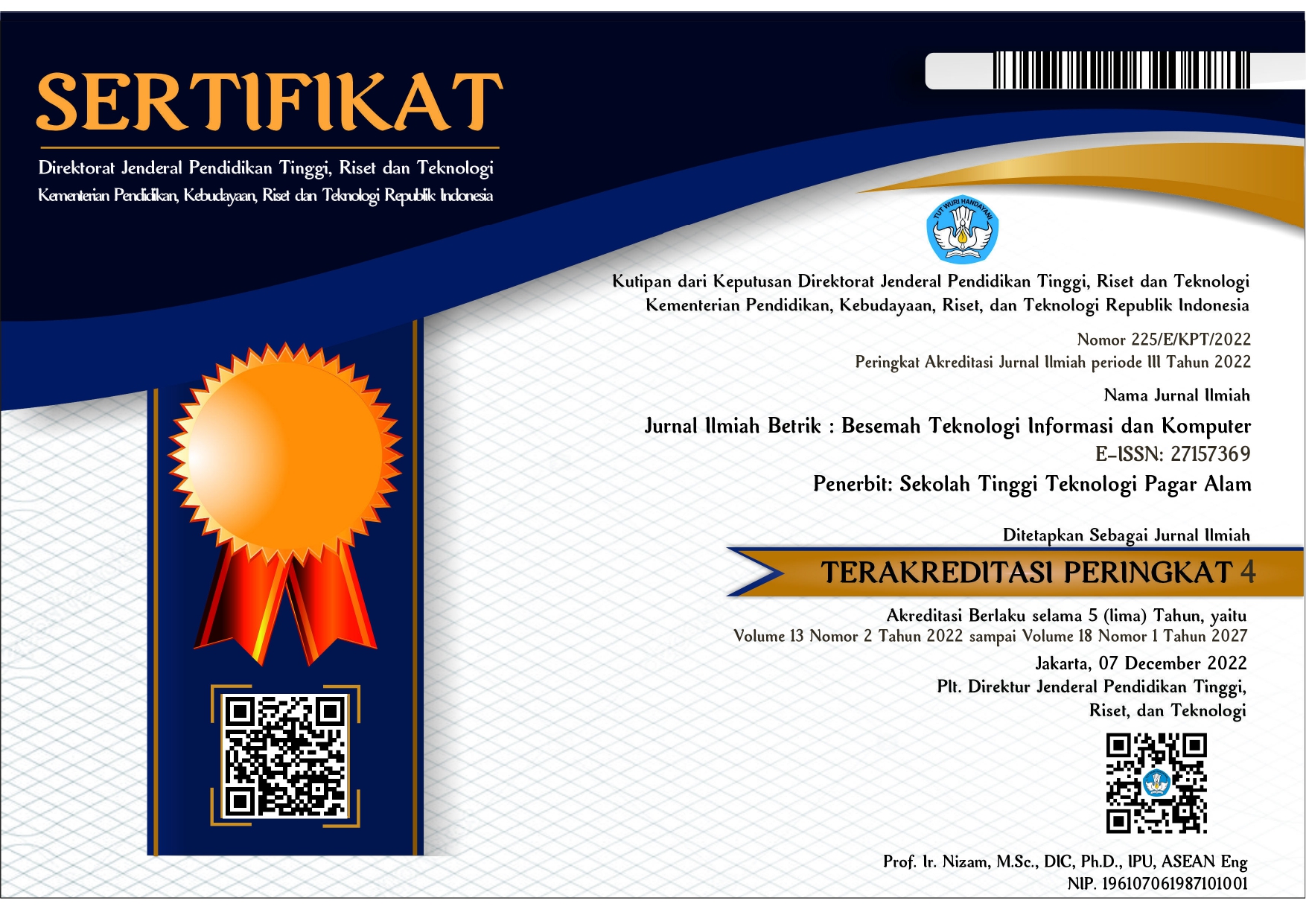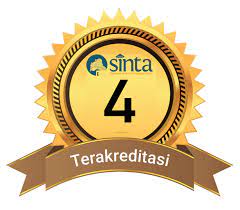IMPLEMENTASI ALGORITMA NAÏVE BAYES PADA SISTEM PAKAR DIAGNOSA PENYAKIT TIFOID BERBASIS WEB
DOI:
https://doi.org/10.36050/betrik.v13i03%20DESEMBER.36Abstract
Typhoid is an infectious disease that is still a health problem in developing countries, especially in Indonesia. Salmonella typhi is a bacterium that causes typhoid fever which can be transmitted through food or drink contaminated with feces or urine from an infected person. The first step in the management of typhoid is the establishment of an appropriate diagnosis. The expert system application for diagnosing diarrheal disease is made with a web-based application, so that it can be accessed by the wider community, besides this application can also help medical personnel to make decisions in the diagnosis of typhoid. The advantage of the nave Bayes algorithm in this expert system is that it can increase calculations ranging from nausea and vomiting, diarrhea, sore throat, headache, fever and loss of appetite, so obtained 14 rules resulting from interviews with experts, so it can be concluded that the research conducted implemented into a web application can assist users in diagnosing typhoid disease in each patient.
References
Alfianty, N. H., & Mulyati, S. (2020). Penerapan Naïve Bayes Untuk Klasifikasi Data Penyakit Pada Anak. 6.
Alvina Felicia Watratan, Arwini Puspita. B, & Dikwan Moeis. (2020). Implementasi Algoritma Naive Bayes Untuk Memprediksi Tingkat Penyebaran Covid-19 Di Indonesia. Journal Of Applied Computer Science And Technology, 1(1), 7–14. Https://Doi.Org/10.52158/Jacost.V1i1.9
Anwar, K. (2021). Program Studi Teknik Informatika Fakultas Sains Dan Teknologi Universitas Islam Negeri Syarif Hidayatullah Jakarta 2020 M / 1441 H. 141.
Balubita, H., Si, S., Kom, M., & Permatasari, M. (N.D.). Aplikasi Pencatatan Surat Masuk Dan Surat Keluar Di Bp3tki Bandung. 6.
Chandra, J., & Putri, H. (2019). Aplikasi Pengelolaan Surat Masuk, Surat Keluar Serta Pembuatan Surat Perintah Perjalanan (Studi Kasus: Dinas (Sppd) Di Kpu Prov. Jawa Barat).
Hermanto. (2021). Penerapan Naïve Bayes Pada Sistem Pakar Diagnosa Gangguan Pencernaan Balita. 5.
Jatmikanto, T. (2019). Implementasi Algoritma Naïve Bayes Dalam Proses Analisis Efisiensi Jasa Servis Bengkel Daihatsu Cabang Salatiga.
Katresna, D. N., & Dzikry, F. M. (2020). Implementasi Algoritma Naive Bayes Pada Klasifikasi Tweet Untuk Mengetahui Tingkat Kemalasan Siswa. 5.
Novianti, D. (2019). Implementasi Algoritma Naïve Bayes Pada Data Set Hepatitis Menggunakan Rapid Miner. Paradigma - Jurnal Komputer Dan Informatika, 21(1), 49–54. Https://Doi.Org/10.31294/P.V21i1.4979
Puspa, M. A. (2018). Sistem Pakar Diagnosa Penyakit Hipertensi Menggunakan Metode Naive Bayes Pada Rsud Aloe Saboe Kota Gorontalo. Ilkom Jurnal Ilmiah, 10(2), 166–174. Https://Doi.Org/10.33096/Ilkom.V10i2.304.166-174
Rifqo, M. H., & Wijaya, A. (2017). Implementasi Algoritma Naive Bayes Dalam Penentuan Pemberian Kredit. Pseudocode, 4(2), 120–128. Https://Doi.Org/10.33369/Pseudocode.4.2.120-128
Samopa, F., & Hakim, J. A. R. (2013). Pembuatan Sistem Informasi Penatausahaan Surat Dan Arsip Berbasis Web Studi Kasus Kantor Pelayanan Perbendaharaan Negara Bengkulu. 2(2), 4.
Supriyatna, A. (2018). Metode Extreme Programming Pada Pembangunan Web Aplikasi Seleksi Peserta Pelatihan Kerja. Jurnal Teknik Informatika, 11(1), 1–18. Https://Doi.Org/10.15408/Jti.V11i1.6628
Tyas, R. A., Anggraini, M., Sulasiyah, I. A., & Aini, Q. (2020). Implementasi Algoritma Naïve Bayes Dalam Penentuan Rating Buku. Sistemasi, 9(3), 557. Https://Doi.Org/10.32520/Stmsi.V9i3.915
Yuliyana, Y., & Sinaga, A. S. R. M. (2019). Sistem Pakar Diagnosa Penyakit Gigi Menggunakan Metode Naive Bayes. Fountain of Informatics Journal, 4(1), 19. https://doi.org/10.21111/fij.v4i1.3019
Downloads
Published
How to Cite
Issue
Section
License
Copyright (c) 2023 Ilham Budiman, Ferdiansyah

This work is licensed under a Creative Commons Attribution 4.0 International License.
















